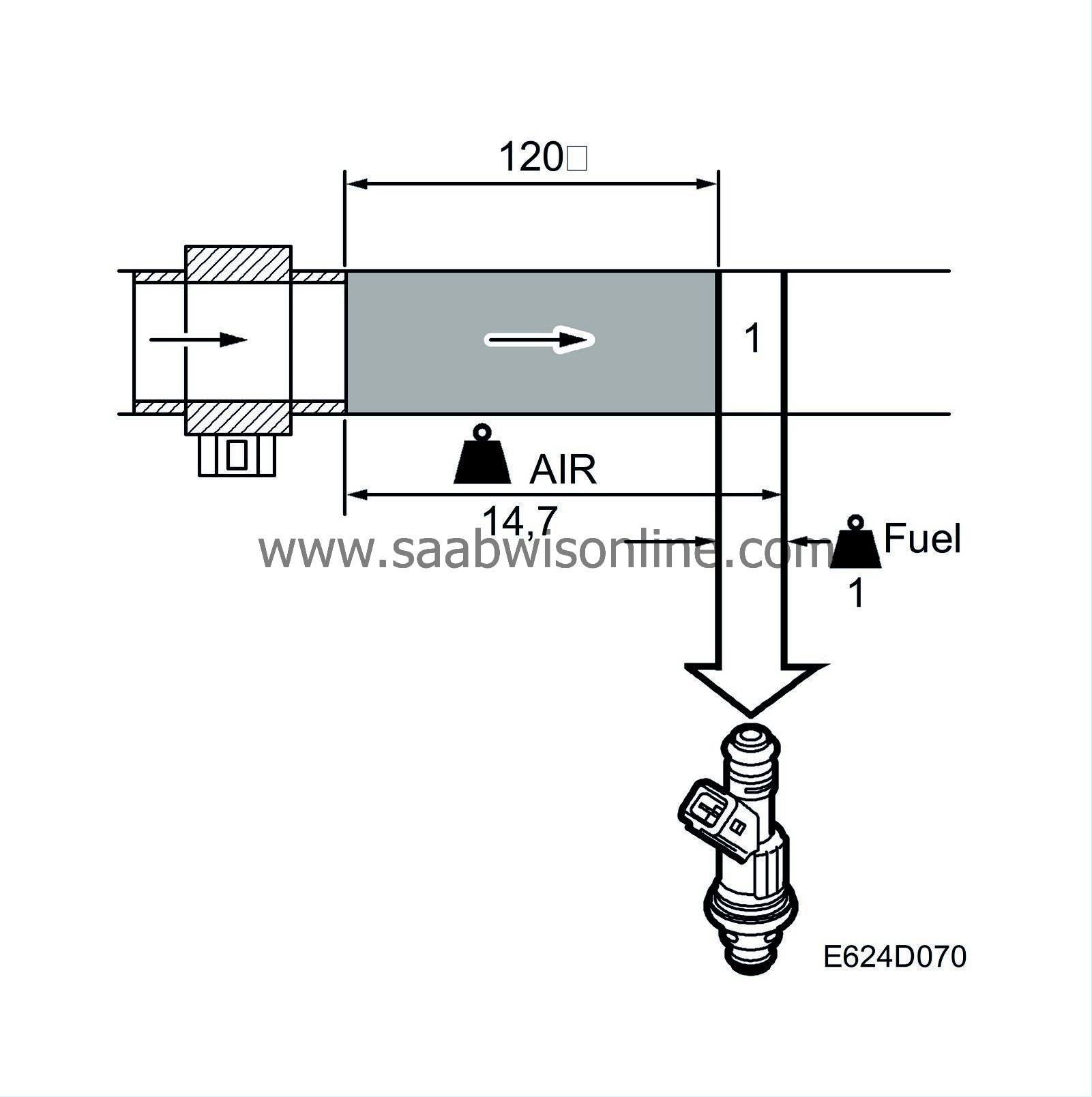Basic fuel quantity
| Basic fuel quantity |
However, the most useful value is the quantity of air drawn into each cylinder, as the fuel will be added to this air. The control module records the air mass drawn in during one engine revolution. Since the engine is a 6-cylinder, 4-stroke unit, three cylinders must have drawn in air simultaneously during this engine revolution. The air mass which passes the mass air flow sensor is divided by three and the control module now knows how much air has been drawn into each cylinder. The unit is now converted into milligrams air/combustion (mg/c).
To achieve lambda = 1, there must be a specific fuel/air ratio, namely 1 kg fuel to 14.7 kg air. As we know how much air has been drawn into each cylinder per combustion, the control module can easily calculate how much fuel is to be injected into the cylinders each time. The milligrams air/combustion figure is divided by 14.7 and the result is the number of mg fuel/combustion to be injected into each cylinder.
The Compensation section, see
 , explains why the basic fuel quantity must sometimes be adjusted to a leaner, or more frequently, a slightly richer mixture for the engine to function well and for emissions to be kept within the prescribed limits.
, explains why the basic fuel quantity must sometimes be adjusted to a leaner, or more frequently, a slightly richer mixture for the engine to function well and for emissions to be kept within the prescribed limits.



